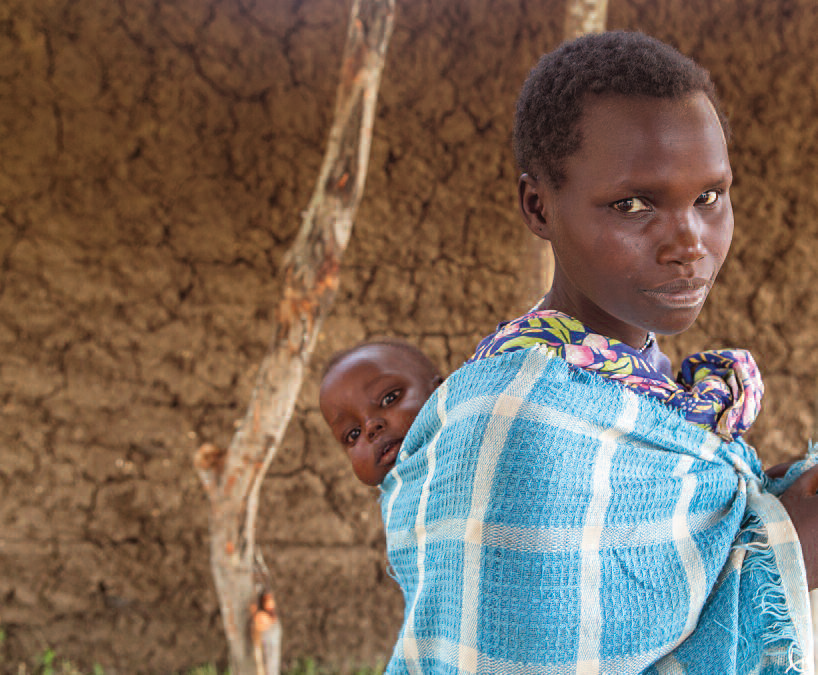Aid for Nutrition: maximising the impact of nutrition-sensitive interventions
 By Samuel Hauenstein Swan and Hugh Lort-Philips, Action Against Hunger/ACF International and Dr Stephen Spratt, Institute of Development Studies (IDS)
By Samuel Hauenstein Swan and Hugh Lort-Philips, Action Against Hunger/ACF International and Dr Stephen Spratt, Institute of Development Studies (IDS)
Synopsis of report1
Location: Global
What we know: There is considerable evidence on nutrition specific interventions to address immediate causes of undernutrition. Much less is known about which ‘nutrition-sensitive’ interventions will bring about the most impact.
What this article adds: The third report in an ACF Aid for Nutrition series collates available evidence of interventions in nutrition-sensitive sectors which are likely to bring about the best improvements in rates of undernutrition. A framework for prioritising nutrition-sensitive interventions in different contexts is proposed. This is a starting point for ongoing research and experience sharing.
The third report in the Aid for Nutrition series, Maximising the Impact of Nutrition-Sensitive Interventions, was published in September 2013 by Action Against Hunger. This article, written by the Institute of Development Studies and ACF International, pulls together the available evidence of interventions in nutrition-sensitive sectors which are likely to bring about the best improvements to rates of undernutrition and which are likely to best complement existing nutrition-sensitive actions. The report then sets out a framework for prioritising nutrition-sensitive interventions in different contexts.
The previous reports in the series focused on ‘nutrition-specific’ interventions to address the immediate causes of undernutrition. The first volume, ‘Can investments to scale up nutrition actions be accurately tracked?’ was published in June 20122 and the second report, ‘Using innovative financing to end undernutrition’, was published in September 20123.
By examining ‘nutrition-sensitive development’, the third report proposes aid strategies that target the underlying causes of undernutrition. Nutrition-sensitive interventions are defined in the report as interventions which “consciously modify policy in key sectors so as to improve nutrition outcomes. Drawing on the best available evidence, interventions specify clearly the route from intervention to impact, and develop indicators to monitor progress along this pathway.” The research also concludes that such interventions need to complement nutrition-specific strategies.
Far less is known about which ‘nutrition-sensitive’ interventions will bring about the most impact than is known about nutrition-specific interventions. Given this lack of evidence, the authors explore which interventions should be prioritised. Rather than do nothing or prioritise interventions that are most likely to attract funding, the report proposes a four step diagnostic framework adaptable to all contexts which can help agencies, donors or governments to prioritise nutrition-sensitive interventions where evidence is both limited and unevenly distributed. This framework is designed to help decision makers achieve the best outcomes with resources that have been pledged and can potentially help them to enhance the effectiveness of their interventions. Furthermore, by making the best use of the evidence that does exist, it clearly identifies the gaps in the knowledge base.
Within each nutrition-sensitive sector identified in the report, a number of pathways exist to improved nutrition outcomes. In the case of agriculture, four pathways are identified with the clearest being the impact that the quantity and quality of food produced from subsistence farming has on nutrition. Other pathways in the agriculture sector include the impact that more efficient agricultural practices have on lower food prices and therefore on farmers’ incomes. While reduced prices can reduce income for farmers, more efficient agricultural practices can also give them the opportunity to cultivate and sell other crops and generate additional income. Increasing agricultural efficiency will also have a beneficial effect on GDP growth. While the report acknowledges the need to address the social determinants of undernutrition such as gender inequalities, it first proposes interventions addressing the quality of food produced, potentially by providing vitamin-enriched crops to farmers. It also explores the possibility of artificially adjusting food prices to benefit the agricultural sectors of target economies, but notes that an intimate knowledge of the structure of the sector would be required to correctly determine which price adjustments would be beneficial.
Pathways for the education sector involve links between education and income, and between parental income and child nutrition. Information about health and nutrition could be transmitted through the education system. The main proposed intervention is an expansion of access to primary and secondary education, particularly for girls and young women. Evidence exists which proves that education of the mother reduces the risk of child stunting by a greater degree than education of the father. With regard to the health sector, the analysis focuses on the area of family planning which bears strong links to nutrition outcomes. It states that too short an interval between pregnancies can deplete a woman’s nutritional reserves, claiming that extending birth intervals to an optimal 18-24 months could reduce child stunting by up to 50%. Proposed interventions revolve around distributing family planning information via home visits and existing education systems.
Some interventions appear under more than one sector. Social protection, for example, may provide additional finance so that more nutritious food can be purchased, or provide that food directly as an in-kind transfer.
Consistent throughout all nutrition-sensitive sectors reviewed is the importance of female empowerment. Strong evidence exists which proves that women place greater emphasis on family and child welfare when distributing their food within the household. Empowerment of women through education and change in legislation increases the resources they are able to freely command, thereby increasing flows of nutrition into households and towards their children. The author argues that this would lead to women having a greater influence over domestic decision-making, particularly over other issues crucial to nutrition such as family planning.
The diagnostic framework consists of a four-step process for agencies, donors or governments to help them to identify nutrition-sensitive interventions which are likely to be most successful in regions where there is most need. The four steps are geographical allocation, sectoral allocation, pathway and determinant allocation, and intervention allocation. In each step, a set of criteria is combined with existing data to determine which geographic area, economic sector, pathway, or intervention is most appropriate.
This is very much a starting point of what should be an ongoing combined research effort. In the coming years, more evidence will accumulate on which interventions are most effective, for which groups and under what conditions. Already we know that the country context is extremely important: interventions that appear to work well in some environments do less well in others. Improving understanding of what the crucial factors are in each case is essential, and this can only be done with a deep and rich understanding of local conditions.
Nutrition has risen rapidly up the international agenda over the past few years. However if we are to capitalise on this opportunity, we need to move away from the abstractions of the drawing board to the messy realities of the real world. A wide range of factors influence nutrition outcomes at different levels. Ensuring an adequate dietary intake and good health are the most immediate determinants, but underpinning these are issues like food security, the care of children and women and access to good quality health services.
Maximising the Impact of Nutrition-Sensitive Interventions stresses the need for nutrition-sensitive interventions to be complementary to more direct actions and requires that they are embraced and their outcomes meticulously studied in accordance with the proposed diagnostic framework. It emphasises the wide-reaching nature of nutrition-sensitive interventions, and recognises that now, more than ever before, there is an opportunity for closer collaboration between nutrition agencies in terms of cooperatively studying outcomes and undertaking complementary projects.
The Scaling Up Nutrition (SUN) movement held its annual Global Gathering in New York in October 2013. Rather than the ‘high-level’ political meetings of previous years, this event brought a range of stakeholders from different countries together to share experiences about what works and under what conditions (43 countries are now signatories to the SUN Framework).
Sharing practical experiences at events such as the SUN Global Gathering or the upcoming ENN Nutrition Technical Meeting (October 2014), is an important part of closer collaboration. If we are to achieve the greatest possible impacts, however, it is essential that we develop mechanisms to translate this growing body of evidence into the most effective interventions on the ground. Only if people in the corridors of power start to systematically utilise this wealth of information, can we save time, resources and lives.
For more information, contact: Samuel Hauenstein Swan, email: s.hauensteinswan@actionagainsthunger.org.uk
1Aid for Nutrition. Maximising the Impact of Nutrition- Sensitive Interventions. ACF, IDS. September 2013. http://reliefweb.int/report/world/aid-nutrition-maximisingimpact-nutrition-sensitive-interventions
2Available at: http://www.actionagainsthunger.org.uk/resource-centre/online-library/
3http://www.actionagainsthunger.org.uk/resourcecentre/online-library/


